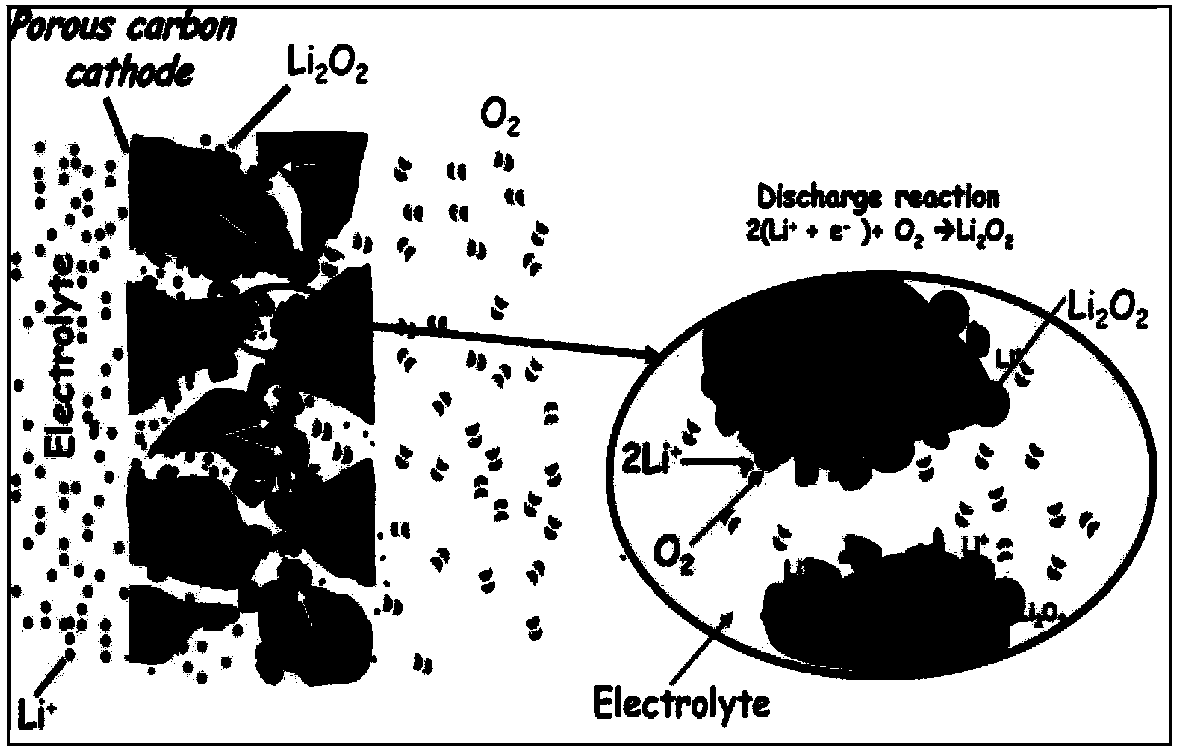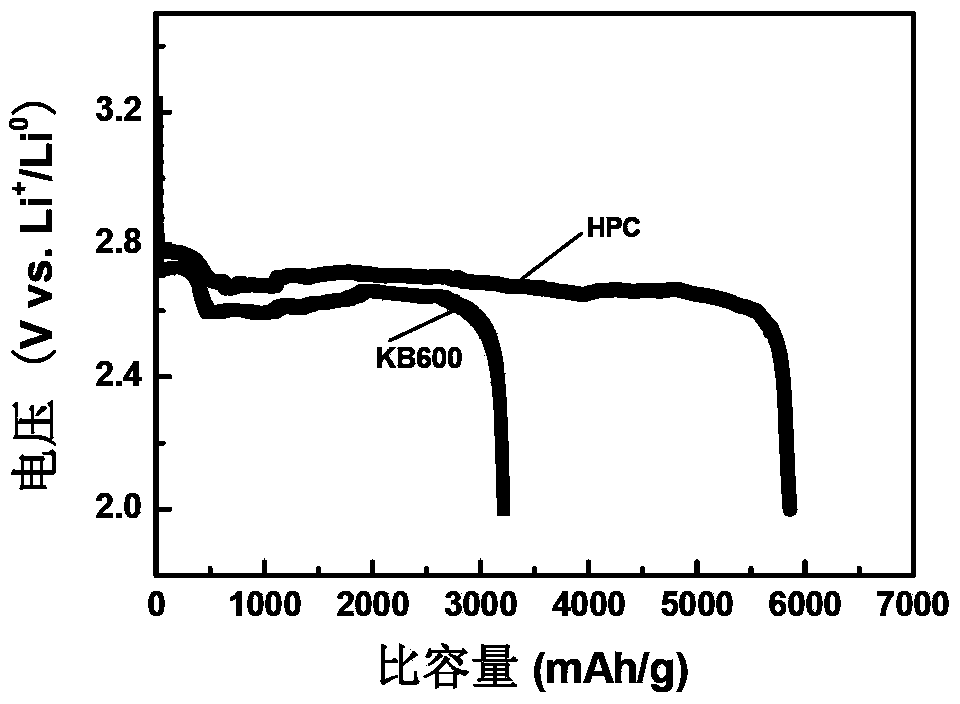Nitrogen-doped porous carbon material for lithium-air battery positive electrode
A porous carbon material, air battery technology, applied in battery electrodes, fuel cell type half cells and secondary battery type half cells, circuits, etc. requirements, experimental conditions and other issues, to achieve the effect of promoting commercial application, improving space utilization, and shortening diffusion distance
- Summary
- Abstract
- Description
- Claims
- Application Information
AI Technical Summary
Problems solved by technology
Method used
Image
Examples
Embodiment 1
[0033] Nitrogen-doped porous carbon materials with hierarchical pore structure were prepared using nano-magnesium carbonate powder as a template. Accurately weigh 5g of glucose, add 15ml of water and stir until completely dissolved, then add 8g of citric acid and 5g of magnesium carbonate, heat and mechanically stir in a water bath at 80°C to make it completely dispersed, and put it in a vacuum at 80°C after the water is completely evaporated Dry for 24h. Then put the dried product into high temperature tube furnace for carbonization, the atmosphere is NH 3 , the gas flow rate is controlled at 20ml / min. After carbonization at 800°C for 2 hours, the nanoparticle / carbon composite was obtained, and an appropriate amount of 2M dilute hydrochloric acid was added to remove nano-magnesium carbonate. After filtration, vacuum drying at 80°C for 24 hours was obtained to obtain the nitrogen-doped carbon material.
[0034] The positive electrode material structure prepared in Example 1 ...
Embodiment 2
[0039] Nitrogen-doped porous carbon materials with hierarchical pore structure were prepared using nano-calcium carbonate as a template. Accurately weigh 5g of sucrose, add 2g of ethylenediamine into 10ml of water and stir until completely dispersed, then add 5g of calcium carbonate, heat and mechanically stir in a water bath at 80°C to make it completely dispersed, and put it in a vacuum at 80°C after the water is completely evaporated Dry for 24h. Then put the dried product into high temperature tube furnace for carbonization, N 2 Treat at 850℃ for 3h, change CO 2 Purging at 850°C for 1 hour to obtain the nanoparticle / carbon composite, then removing calcium carbonate with an appropriate amount of 2M dilute hydrochloric acid, filtering and drying in vacuum at 80°C for 24 hours to obtain the carbon material.
Embodiment 3
[0041] Commercialized SiO 2 Nitrogen-doped porous carbon materials with hierarchical pore structure were prepared using sol as a template. Accurately weigh 5g of glucose, 1g of citric acid, add 15ml of water and stir until completely dissolved, then add 5g of SiO 2 The sol was mechanically stirred to completely disperse it, heated and mechanically stirred in a water bath at 80°C, and dried under vacuum at 80°C for 24 hours after the water was completely evaporated. Then put the dried product into a high-temperature tube furnace for carbonization, the atmosphere is ammonia, and the gas flow is controlled at 30ml / min. Nano-SiO was obtained by carbonization at 900°C for 3 hours 2 / carbon composite, plus an appropriate amount of 1M HF to remove SiO 2 , after filtration and vacuum drying at 80°C for 24 hours, the carbon material was obtained.
PUM
| Property | Measurement | Unit |
|---|---|---|
| pore size | aaaaa | aaaaa |
Abstract
Description
Claims
Application Information
 Login to View More
Login to View More - R&D
- Intellectual Property
- Life Sciences
- Materials
- Tech Scout
- Unparalleled Data Quality
- Higher Quality Content
- 60% Fewer Hallucinations
Browse by: Latest US Patents, China's latest patents, Technical Efficacy Thesaurus, Application Domain, Technology Topic, Popular Technical Reports.
© 2025 PatSnap. All rights reserved.Legal|Privacy policy|Modern Slavery Act Transparency Statement|Sitemap|About US| Contact US: help@patsnap.com



